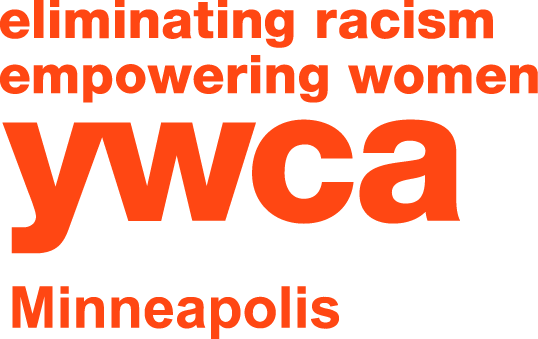Rematriation: Awareness and Recognition of Indigenous Land
March 4, 2022
In order for us to understand rematriation, let's look at a practice that has become more prevalent among institutions — especially college campuses, but also organizations and conferences. We are talking about land acknowledgements.
What are land acknowledgments?
Land acknowledgements used to be a practice of Indigenous communities to recognize their ties to the land, language and peoples past, present and future. In more recent years, others began drafting land acknowledgements to indicate awareness of the original stewards of the land. These practices have become more common. However, not everyone is clear on the reason behind the practice. Most people are aware of the existence of Indigenous populations before the arrival of European settlers in the lands we currently call the Americas. This is talked about in the past tense, as if the colonial genocidal system was successful in wiping out the Indigenous populations.Acknowledging the lands and the peoples serves several purposes: awareness of the past, understanding of the present and taking action to address ongoing injustice. It creates awareness that the lands we currently reside belongs to peoples with names, histories and languages who presently exist. Take a moment to find out whose land you're on.The continued displacement of Indigenous populations was further reinforced in our institutions with the Morril Land-Grant Act of 1862, which gave federal lands to western states to establish colleges and universities. Learn more about these grants.
Awareness and Recognition
With that awareness comes the recognition that we are in a settler colonial system, a system which aims to eliminate and suppress Indigenous populations and replace them with the settler population. The value of knowledge is to do something with that new information we learn. Land acknowledgement is a good first step and prerequisite to acting. Delivering land acknowledgements without action is at best performative and at worst exploitative. Any racial equity work we do should be gauged through its effect on the impacted communities.
Maya Angelou said, “Do the best you can until you know better, when you know better do better." As we learn about lands we reside and its Indigenous communities, we ought to take action to correct the historical wrongs that were committed and continue to be reinforced by inaction. While we cannot change history, we can take steps to change our current systems.
For those who say it is impossible, know that it is already happening. Read an example:Homesteading family’s lasting legacy realized in agreement to return nearly 10,000 acres of habitat to Colville Tribes in conservation deal
Reparations vs. Rematriation
Tangible ways to move beyond land acknowledgements are reparations and rematriation. Leah Penniman, Executive Director of Soul Fire Farm, writes, “Imagine your neighbor stole your cow. A few weeks later the neighbor comes over, laden with remorse, to offer a sincere apology and a promise to make it right. The neighbor offers to atone by giving you half a pound of butter every week for the rest of the cow’s life. What do you think of that?”Ms. Penniman was quoting Ed Whitfield, board member of the Southern Reparations Loan Fund, during the E.F. Schumacher Center lectures in 2018. His audience was unanimous in its response: “We would want our cow back!” The relative simplicity of this example drives home the point of how much the European colonizers owe to the Indigenous people who lived in harmony with the Earth on the land originally called Turtle Island. What is owed to the descendants of enslaved African people who were imported to this country based on their knowledge and expertise of how to farm the land effectively?Penniman goes on to say, “The UN Principles on Reparations and Immunity, which provides basic guiding principles around gross human rights violations, holds that “reparation should be proportional to the gravity of the violations and the harm suffered.” In other words, society’s scant attempts to make amends for atrocities is the butter; reparations are the cow.
What is Rematriation?
According to Steven Newcomb from the Indigenous Law Institute, rematriation is “restoring a living culture to its rightful place on Mother Earth” and “to restore a people to a spiritual way of life, in sacred relationship with their ancestral lands without external interference.”When European colonizers violently removed Indigenous peoples from this land, pushing them onto reservations and into residential schools and forced assimilation to Euro-Christian ways, the delicate balance and relationship between humanity and the Earth was disrupted. Biologically, disastrous changes in climate are the scars that remain from years of disregard for the Earth as a being. “Rematriation acknowledges that Indigenous ancestors lived in spiritual relationship with our lands for thousands of years and have a sacred duty to maintain that relationship for the benefit of future generations," says Newcomb.Rematriation reclaims what was taken from women and Mother Earth. Rematriation uplifts the benefits of matriarchy.
“If repatriation is a return to the fatherland, rematriation is:— A return to the motherland— A return to the ancestral womb— Keeping our ancestral traditions— Cultivating and increasing our capacity to love and be loved, a process disrupted by conquest— Restoring our liberation”— Rematriating Borikén
What Can You Do?
Pay micro-reparations (person-to-person transfer of funds, acknowledging that descendants of the colonizers accumulated wealth on the backs of Indigenous and enslaved people)
Transfer deeds into a land trust; return stolen lands to cooperatives
Recognize the personhood of nature
Understand and create cultural respect easements (similar to conservation easements but intended to allow land use by people who are Indigenous to the land)
Follow the lead of Indigenous women
Support and contribute to Native-led organizations in your city/state
Show up for Native-led causes
Further Resources
Reparations Map — Northeast Farmers of Color Land Trust
A New Generation of Black Farmers Is Returning to the Land — YES! Magazine
About Us – Dream of Wild Health
Rematriation: Going Beyond Land Acknowledgement — Ohlone Land Acknowledgement Series by Fine Arts Museums of San Francisco
